From time to time, acne may appear on the child’s hands, photos of which are presented below and which parents should pay attention to, as they may indicate the presence of some contagious disease, allergic reaction or serious illness.
They can also appear upon contact with a poisonous plant, insect bites, and also due to an imbalance of internal organs. As can be seen from all of the above, there are quite a few different reasons for the formation of pimples, so you should immediately contact a pediatrician or dermatologist to identify the cause and eliminate it.
For what reasons do they appear?
Very often, parents notice small pimples on their child’s hands, which may be a symptom of some skin disease. If they appear, you should immediately go to the doctor, as they may indicate the presence of scabies, which belongs to the category of parasitic infectious diseases.
The causative agent of this disease is the scabies mite, which can quickly spread to all family members in a short time, and this disease can be identified not only by the presence of these pimples, but also by the severe itching that is observed in the places where they form.
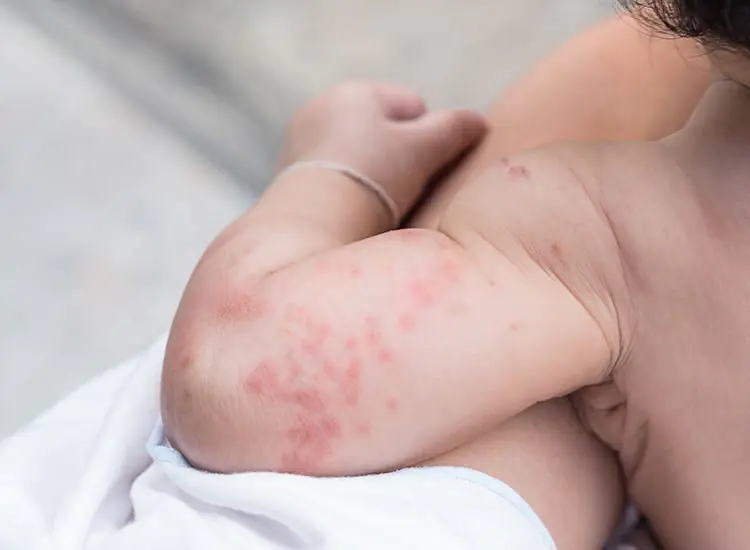
Small pimples on a child’s hands are formed due to skin contact with any aggressive household chemicals, as well as after consuming certain medications or food containing allergens.
Often, small pimples appear on the hands of children in the form of nodules shaped like a hemisphere, in this case we are talking about the presence of molluscum contagiosum, which also requires immediate treatment. If itchy, slightly raised, flat pimples or pale pink blisters appear on a child’s hands, this may indicate the presence of hives, which is one of the symptoms of an allergy.
Many people are accustomed to the fact that pimples appear anywhere, for example on the back or on the face, but not on the arms, but this is not at all true. A rash can easily form on any part of the skin of the arms, for example on the crook of the elbow or on the back of the palms, and there are a variety of types of acne that can appear on the skin of the upper extremities.
The following types of acne may form on the skin of children's hands:
- red pimples on the child’s hands that resemble spots;
- black or translucent white dots;
- purulent pimples or blisters;
- watery pimples;
- dry pimples covered with a dense membrane;
- blisters with scaly spots;
- subcutaneous pimples.
In addition, all rashes can be localized in certain places. So, for example, pimples form on the hands, palms, and sometimes on the inner bends of the elbows, which may indicate a disturbance in the activity of the sweat glands or dyshidrosis.
If pimples appear on the skin of the arms above the elbow line, they may indicate the presence of keratosis of the follicles or an allergic reaction. Rashes may appear on the fingers due to fungal infections, scabies or molluscum contagiosum.
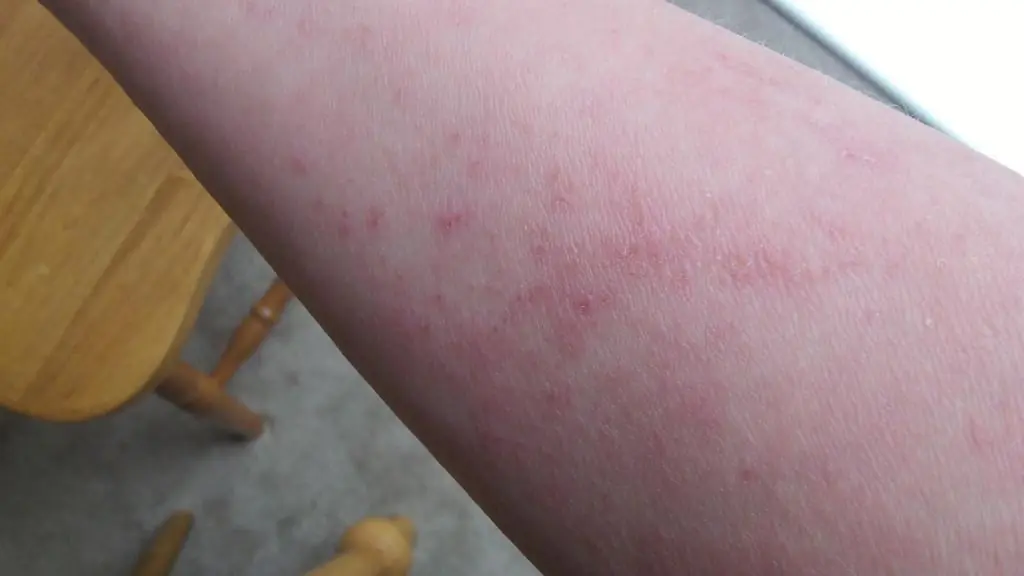
The pimples may appear in small numbers on the hands or as a large rash with or without severe itching. In addition, the rash elements can be large or very small, dot-like, transparent, white, dark or red.
In addition, watery pimples on a child’s hands can be a symptom of various diseases, while other pimples are a characteristic sign of a specific ailment. So, for example, small red or pale pink pimples that can appear on the entire surface of the skin of the hands are a symptom of mononucleosis. Small stars that resemble stars can appear on children’s hands due to such a dangerous disease as meningococcal infection.
Acne appeared on the child's hands
Acne on the hands can occur due to various reasons. It can be:
- repeated allergic reaction to medications;
- bacterial or infectious disease;
- hereditary disease;
- failure to observe basic personal hygiene (the result of bacterial growth due to infection entering the body).
Another cause of acne on the legs and arms of a child may be a sudden hormonal change. Most often this occurs during adolescence. Most teenagers suffer from acne and mostly only the face is treated, while, for example, the hands are left and this problem is avoided. This is incorrect, since it is better to treat these rashes so that there are no complications. You should not squeeze out pimples yourself. This will likely cause more infection of the skin tissue, especially if done with unwashed hands, and may also leave scars or welts.
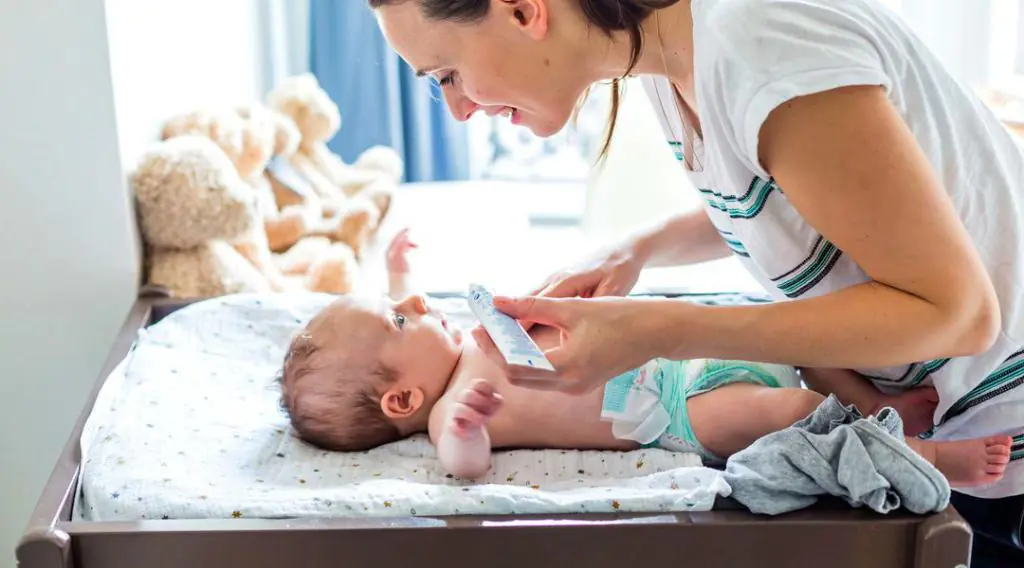
To completely solve this problem, you should review all your cosmetics. It is best to choose products made from natural ingredients. It’s even better if the cosmetics are from the same company. Before using any medication, be it ointment, gel, tablets or cream, you should consult a pediatrician. This applies not only to children, but also to girls and boys in adolescence.
The most effective means of combating white pimples on a child’s hands are given below:
- Boric acid is good for treating acne on the arms and legs after insect bites. To do this, you need to soak a cotton swab in a solution of boric alcohol. It is necessary to wipe the affected part of the body overnight and leave air access to it. You can achieve a faster effect if you also wipe it in the morning, but in this case there is a risk of drying out the skin. The effect will likely be visible within a week.
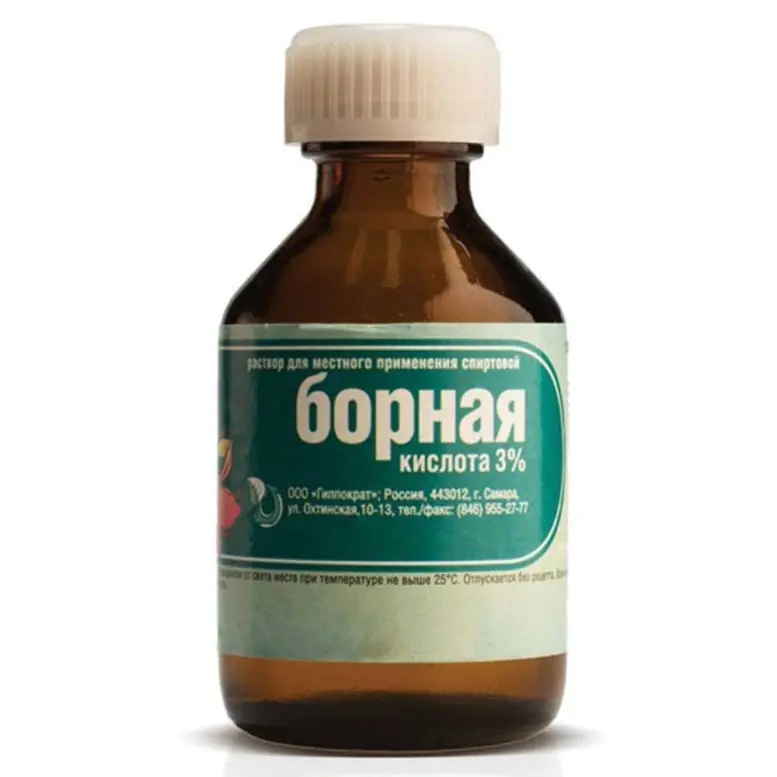
- Antihistamine tablets for acne are quite effective drugs aimed at eliminating the manifestations of allergies on the skin.
- Probiotics. Such drugs actively affect the root cause of formations inside the skin. Some of the most popular products at the moment are “Bifiform” and “Lactofiltrum”.
- Hormonal drugs. There are medications that regulate hormonal balance due to hormonal imbalance. This most often occurs in children over 10 years of age. Medicines can radically change the situation, because there will no longer be any reason for acne to occur.
Ointments and other drugs
What medications and antibiotic ointments are used for acne on the legs and arms of a child? Let's list the main ones:
- "Erythromycin".
- "Dalacin."
- "Clindamycin."
- "Lactofiltrum" is taken in tablets, but it is contraindicated in case of digestive disorders.
- “Zinerit”, which can dry out skin rashes not only on the hands, but also on other parts of the body.
- Antibacterial agents such as benzene peroxide. This drug has a strong property of dissolving skin deposits. The medication has no contraindications, but during pregnancy it can be used only on the recommendation of the attending physician.
- Acids. Quite strong drugs that are mostly used in cosmetology because they have a very wide range of applications. They are also used to remove dead dermal cells. Acids have a positive effect on the functioning of the glands. It is worth noting that they do not cause addiction to the entire body, so they can be used for a long time. On average, results are visible after 2-3 weeks of treatment.
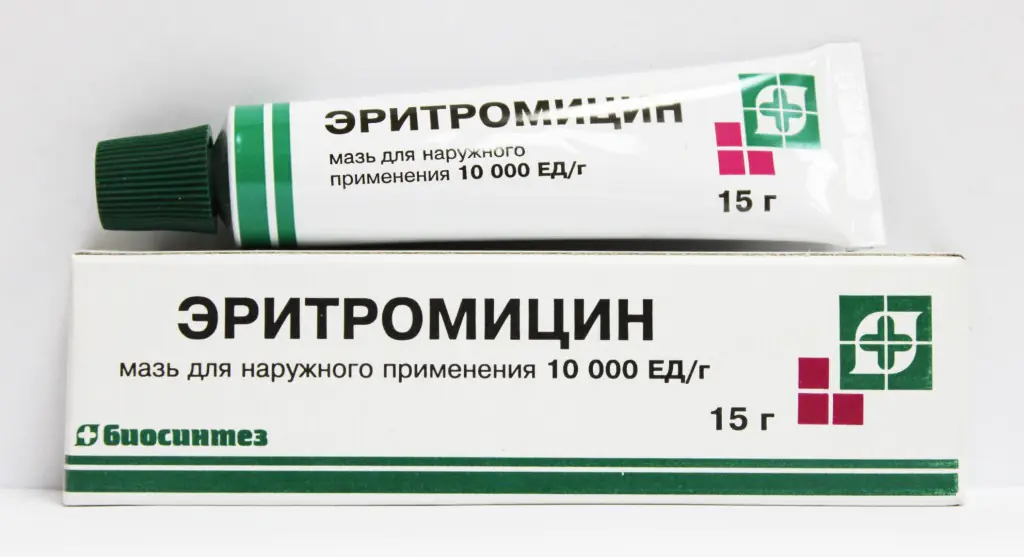
If acne on a child’s hands itches, the following medications are used:
- "Baziron gel". The product is applied directly to acne, but has some side effects, so before use you need to read the instructions for use and consult with a specialist.
- "Metrogil gel" helps with whiteheads affecting the body.
- "Levomycelin". Wipe the skin twice a day with a cotton swab soaked in the solution.
- "Tsindol" is a powerful remedy, but before using it, it is worth testing it on a small area of the skin, due to the fact that it can cause an additional allergic reaction.
In the most severe cases, drugs based on tazarotene and adapolene can help. In many situations, laser treatment can be used. The laser beam penetrates deep into the skin and can destroy the most serious foci of contamination almost painlessly. The beam affects the affected tissues without causing any harm to health at all, so the procedure is harmless to the patient. When the beam hits the site of inflammation, the temperature rises and the bacteria die. Thus, this procedure simultaneously stops and destroys even the most serious formations.
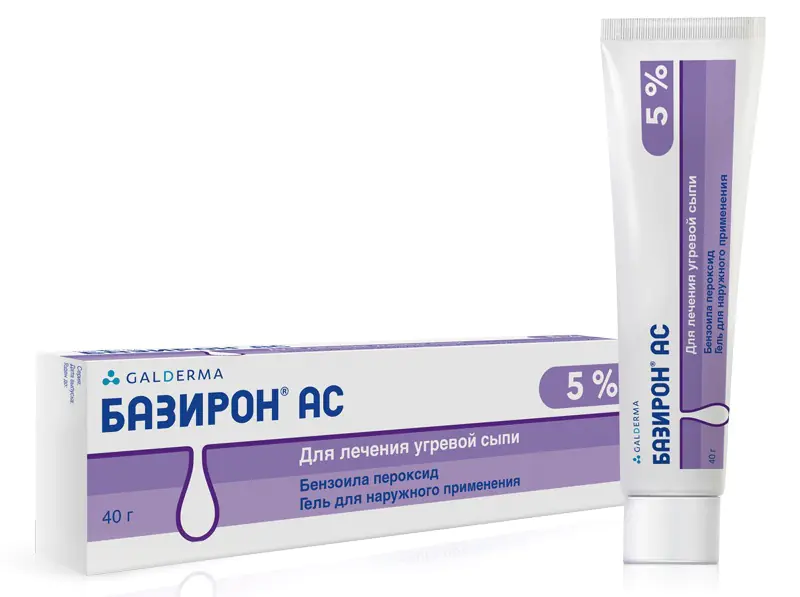
The spot application of antiseptics also helps very well, especially for acne caused by disruption of the sebaceous glands.
In the end, of course, it is important to follow basic hygiene rules. You should wash your hands more often if they get dirty quickly and often. Diets can improve the situation. Often the appearance of a rash is due to poor nutrition. In this case, you should reconsider your diet. Fatty, salty and spicy foods should be excluded from it. A large proportion of the diet should contain fresh fruits and vegetables, cereals and salads.
Traditional treatment
The medicinal industry provides a considerable selection of drugs to get rid of acne: special bactericidal lotions and shower products. Lotions should be applied directly to those areas where there are rashes. But scrubs can be used no more than twice a week.
After cleansing and water procedures, anti-inflammatory creams and gels should be applied to the skin. You can use well-known folk methods to get rid of rashes. Herbs have a wonderful effect. You can make lotions and baths with a decoction of plants. Eliminate scented soap from your care products, replacing it with tar soap. This soap perfectly disinfects and makes the skin drier, controls the process of the sebaceous glands. Here are some effective folk methods of treatment.
Salicylic acid
How to treat with salicylic acid? Treat the affected parts with a solution of 2% salicylic acid. A certain amount of the substance is applied to the treated area once a day. The acid perfectly dries the affected areas, relieves itching and burning.
Plant juices
You can use the juice of parsley, agave and string. You need to moisten a swab with this composition and wipe the areas where there is inflammation. Under no circumstances should the juices be mixed; you can only use one type of plant.
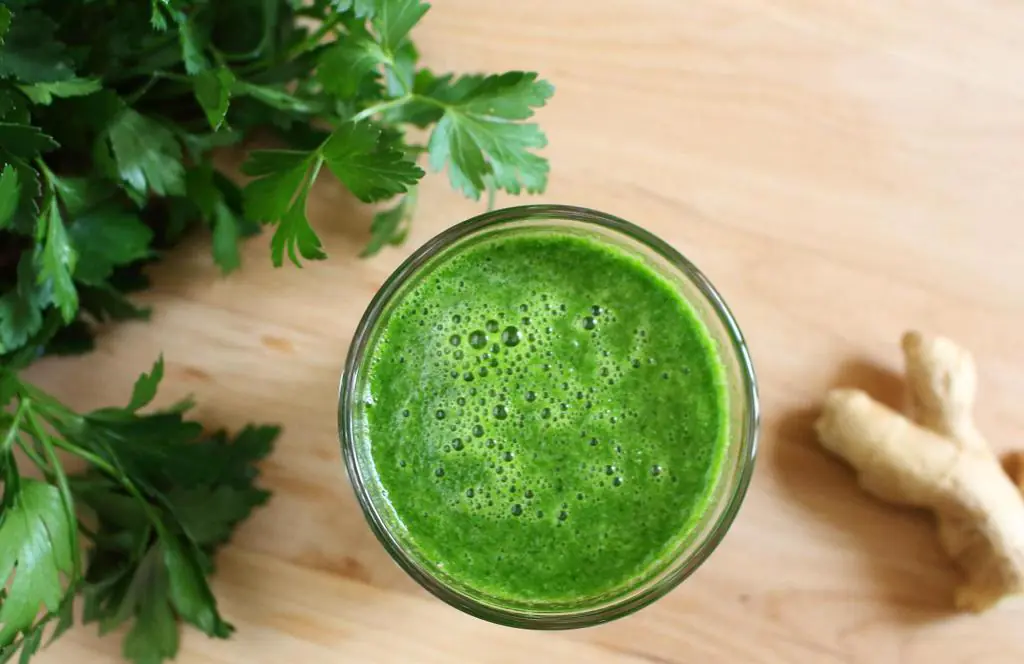
Cosmetic clay
It is best to take white or blue. Simply mix the powder with warm water and apply to the affected areas. Keep it on for 15 to 20 minutes, and then rinse off the mixture and disinfect the skin.
Vegetable oils
Wipe the areas with tea tree oil, the antiseptic qualities of which cannot be doubted. You can use calendula oil in the same way. It heals well, fights inflammation and is a delightful antiseptic.
Potato lotion
Grate the potatoes and apply a gauze compress to the inflamed area. You can also arrange a bath with potato starch: at the rate of 1 kilogram of starch per whole bath. The procedure will undoubtedly help relieve itching and dry out the pustules.
It’s easier to prevent any health problem than to go to the doctors later. Taking into account the fact that there are quite a large number of causes of acne, adhere to preventive prescriptions.
If pimples cause quite severe discomfort - they itch and get wet, then all sorts of attempts at self-medication have a good chance of ending in aggravation. Therefore, to avoid unfortunate results, be sure to seek support from a qualified professional.
Lemon
Lemon juice works very well against subcutaneous acne on the hands. Half the fruit is squeezed out and dissolved in 200 grams of water. The ingredients are mixed. The finished mixture is suitable for fighting inflammation. When using this method, the surface of the hands is cleaned and harmful bacteria are destroyed.
Inflammations gradually disappear, and the skin of the hands becomes healthy. This product should be used once a day. Leave diluted lemon juice on the skin for 5 to 10 minutes. There is a possibility of burning during the procedure. At the end of the session, the lemon juice is washed off with warm water.
Kalanchoe
Experts recommend using Kalanchoe to combat acne on the hands. A small leaf of this plant is washed and the skin on top is removed. Then this plant is used to wipe the inflamed area twice a day. Pimples and redness disappear after a while.
What to do with pimples between a child’s fingers: reasons for their appearance?
The occurrence of pimples between the fingers of a child is far from uncommon. Such a lesion on the skin causes itching, burning, and itching a lot. The cause of their appearance may be completely adult infections: candida. They provoke the development of diseases such as thrush and other urological and gynecological pathologies in adults. These pimples look like a red rash, they itch very much, and are very painful.
Why do acne appear?
Although fungi are opportunistic for people, they cause a lot of trouble for both children and adults. There can be many reasons why pimples occur. The fungus can get on the mucous membrane and spread throughout the body, but remain silent for a long time. Whether a child will catch it depends on the general state of health and the strength of the immune system. And given how children like to put everything in their mouths, the risk of infection increases. In addition, some diseases provoke easier development of the fungus, including:
- Metabolic disorders, especially diabetes, obesity.
- Gastrointestinal diseases.
- Severe pathologies, such as cancer.
- Imbalance of vitamins in the body.
- Operations on internal organs.
- Use of a specific group of medications.
Pimples on the hands can also be chickenpox, but apart from the fingers they will appear all over the body, the spread is rapid, they itch very much. The causes can also be insect bites and not only mosquitoes, but also bedbugs.
Small water pimples
Often noticing water pimples between the child’s fingers, parents blame the child for eating something wrong. But in fact, this may be one of the first symptoms of a serious skin disease.
Scabies
This is a parasitic disease that causes lesions on the skin. The characteristic pimples are caused by the scabies mite. If acne is detected between the fingers, it is this pathology that needs to be excluded first. Indeed, in addition to severe discomfort, scabies is very contagious. Main symptoms:
- Severe itching that gets worse at night.
- Traces of scabies mites.
- Pimples will be located not only between the fingers, but also on the wrist. If there is no proper medical care, the lesions will spread to larger areas.
Infection
It also provokes the appearance of water pimples between the fingers. In addition to these, there will be the following symptoms:
- Increased body temperature.
- Rash all over the body.
- Other characteristic symptoms.
Allergy
It can be detected by a variety of skin rashes; it can also be in any place, including between the fingers. Most often, allergies manifest as red, itchy pimples. But sometimes it can also manifest itself as a merman. The following reactions are provoked by: food, the use of household chemicals, some medications, fungal infections.
Sweating
This is one of the most common reasons for the formation of pimples between the fingers. They are also watery and small, and may be slightly reddish. There are several reasons for the development of heat rash:
- Insufficiently developed thermoregulation regime. Premature babies are especially susceptible to this.
- Peculiarities of skin structure, pH level in particular. In a baby, this indicator is close to zero, in contrast to acid levels in adults.
Bubbles can be located not only between the fingers, but also in the elbow pits, armpits, and other folds. The heat rash is not inherently dangerous, but the baby may have problems with eating and sleeping, because he will be bothered by itching.
With regard to heat rash, it is much easier to prevent than to fight. Prevention measures:
- Daily bathing with thorough drying.
- Care products selected for the season - do not use greasy baby creams in the summer.
- Clothes that are appropriate for the temperature - under them the baby’s skin will not sweat.
Chickenpox, measles
When it occurs, there will be an increase in body temperature, and new ones will immediately appear in place of old, dried pimples.
Measles can also manifest itself as pimples between the fingers, but first the rash appears on the mucous membranes, and then spreads further, including to the fingers. This is a characteristic symptom, but not unambiguous.
Treatment of acne between the fingers of a child
Before you begin treating water pimples, you need to determine the cause of their occurrence, and only a doctor can do this with high accuracy.
If scabies is diagnosed, then the use of a special ointment is prescribed - sulfur. For very young children, the product can be used in the form of an aerosol. It's easier to handle.
If the cause is chickenpox, then treatment occurs at home. Its main task is to relieve symptoms. Often, this disease is easier in children than in adults.
How dangerous are pimples on fingers?
When a pimple pops up, it is unpleasant in any case, it hurts and brings discomfort, especially if it is located between the fingers. What if there are a lot of such rashes and they are not only between the fingers, but all over the hand. In principle, there is no tragedy in this; the only thing that is needed is to determine the cause of the skin lesion on the fingers and treat it. In no case should it be neglected, as due to severe itching, the baby can scratch the pimples until they bleed, thereby opening the way for other infections.
Acne is especially difficult for teenage children to tolerate. Due to their hormonal changes, they can appear anywhere. In addition to unpleasant sensations, the child will experience psychological problems due to such defects. If this happens from time to time, it is necessary to take preventive measures. There is an increased risk of acne due to hypothermia, so it is worth reminding your teenager to dress appropriately for the weather.
What else you need to remember is that caring for the affected skin between the fingers should be moderate. You should not squeeze out pimples of any type, and you especially need to remind a teenager about this.
If their formation on the fingers is the cause of a lack of vitamins, then it is most likely vitamin D, the deficiency of which is most clearly manifested on the skin. Perhaps children's skin needs additional hydration.
Conclusion. It is also important to establish a diet, although the baby’s diet should already be balanced, because the child is growing and developing.
Watery pimples may appear on the human body for various reasons. To obtain the desired result, it is necessary to establish the exact cause that caused the rash.
Otherwise, therapy will take a long time. Therefore, treatment should only be prescribed by a highly qualified specialist.
What is this
In appearance they look like a regular pimple. The only difference is the presence of liquid in their cavity. It may be clear or slightly cloudy. In some cases, a black rod can be found in the middle.
Watery pimples in some cases can disappear completely unexpectedly and just as quickly. Depending on the appearance factor, they can be large or small, single or form large formations.
Symptoms
The appearance of watery pimples always indicates a skin disease. At the initial stage there are a small number of them. If left untreated, they become more numerous and increase in size.
The rash causes severe itching, so the patient often comes to the appointment with burst blisters, in place of which a crust has formed. When ruptured, a white, odorless liquid is released.
Causes and localization of watery acne
Acne most often occurs on the face, neck, limbs, groin area and scalp.
On hands
Any changes in the body most often manifest themselves as watery rashes on the hands.
A number of factors can provoke their appearance:
- In the presence of any irritant, small red or white pimples appear on the hands. Subsequently, their number increases, they grow to large sizes and become crusty. An allergic reaction in some cases can cause severe itching, which can only be relieved with the help of medications.
- The appearance of watery pimples can be caused by microscopic parasitic mites. Scabies can spread quickly from person to person through handshakes and contaminated clothing. Most often, rashes appear between the fingers, which are very itchy. Under a microscope, dark gray streaks leading to bubbles can be seen.
- Small blisters may accompany illnesses such as measles or rubella. They are characterized by high body temperature.
- Minor abrasions and scratches on the hands in the absence of personal hygiene become a favorable environment for the growth of fungus.
- Blocked sweat glands on the hands sometimes cause small pimples to appear. Miliaria most often does not cause discomfort and goes away on its own over time.
- Dry skin on the hands or irritation when in contact with clothing is accompanied by wet rashes.
- Watery pimples on the hands can be caused by problems with internal organs or hormonal imbalance.
Video: Useful information
On the body
Watery pimples on the human body can appear for various reasons.
The most common include:
- The herpes virus first appears on the lips in the form of group watery pimples. If left untreated, they begin to spread throughout the face and entire body. They are characterized by itching, burning, weakness in the limbs and malaise. When the bubble bursts, it becomes crusty. You should not remove it: this will provoke new rashes.
- The first signs of scabies appear on the hands, after which they spread throughout the body. Watery rashes are very itchy, especially at night.
- Pemphigus is characterized by small pimples filled with clear liquid. They first appear in the oral cavity. In some cases they can be painful. And after a rupture, tissue erosion begins, requiring immediate treatment.
- Molluscum contagiosum can cause watery pimples only when in contact with an infected person. The rashes spread throughout the body only if they are squeezed out.
- Hormonal imbalance most often occurs with wet rashes, localized in the abdomen.
- Household chemicals, powders, and some products with weakened immunity provoke allergic rashes. Most often they occur with severe skin itching.
In children
The causes of watery acne in children are practically no different from those in adults. The only caveat is the baby’s delicate skin.
Its irritation with many skin diseases increases several times even with proper care.
- Chickenpox appears on the abdomen and limbs with further spread. The disease occurs with high fever, sore throat and general malaise.
- Miliaria appears in the folds of the skin due to excessive sweating. It appears as reddish watery pimples.
- Disturbances in the functioning of the sebaceous glands or their blockage.
On the face
Pimples with clear liquid inside most often on the face in the form of an allergic reaction to the use of low-quality cosmetics, blockage of glands.
Incorrectly performed cosmetic procedures, high or low temperatures are common causes of rashes.
In an adult
A watery rash on the body of an adult appears for the same reasons as in a child. These could be allergic reactions to an irritant, chicken pox, herpes virus, scabies, prickly heat, or hormonal imbalance.
The rashes are most often localized on the limbs, abdomen, palms, feet, and chin. They may be accompanied by itching, burning, have a reddish tint or pain.
On the dick
Watery rashes on a man's genitals indicate the development of herpes. Not in all cases the infection is transmitted sexually. It can be triggered by hypothermia, frequent stressful situations or a weak immune system.
On fingers
Watery pimples on the toes most often appear in summer or winter. They can be triggered by allergies to household chemicals, citrus fruits, infectious diseases, burns or exposure to cold temperatures on the skin, and frequent stress.
On the child's bottom
Your baby's skin is very sensitive, so watery rashes should be a reason to consult a pediatrician or dermatologist.
On the baby's bottom you can see reddish pimples filled with clear or cloudy liquid. Common causes of their appearance include prickly heat, diathesis, allergies or various infections.
On the labia
The appearance of acne on the genitals not only brings discomfort, but can also be the consequences of various diseases. For example, allergic reactions, papilloma, herpes.
Any rash on the labia can lead to serious complications, so you should not postpone a visit to the gynecologist.
About rosacea on the face. More details here.
The effect of hormonal imbalances on the body
From the above, we can conclude that the most common causes of watery acne include measles, allergies, scabies or the herpes virus.
Hormonal imbalance, which is diagnosed in adolescence, pregnancy, high blood sugar levels, is characterized by watery pimples of various sizes. This leads to decreased immunity and poor health of the patient.
Prickly heat
The disease may be acquired or congenital. Occurs due to disruption of the endocrine system or excess body weight.
In addition, prickly heat can be caused by tight shoes and synthetic clothing. In this case, the bubbles are filled with a clear liquid.
Localized on the face, stomach, folds of the arms and legs. The rashes are most often small, located close to each other, and do not cause physical discomfort.
Dyshidrosis
During the disease, pimples appear due to increased sweating on the palms and soles and cause constant itching.
I diagnose dyshidrosis in spring and summer; it is not considered a contagious disease. Blockage of the ducts of the sebaceous glands occurs most often against the background of neurovascular diseases of the skin.
Pemphigus
The disease is diagnosed mainly in people after forty years of age. In medicine, there are several types and forms of pemphigus, which arise at the genetic level.
Allergy
An allergic rash can be caused by dust, flowers during bloom, pet hair, or low-quality cosmetics. Watery pimples spread throughout the body when exposed to food allergens.
Wet rashes are constantly itchy. When ruptured, they become covered with crusts, which cause severe discomfort.
Without proper treatment, allergies can cause anaphylactic shock. Therefore, the patient must be constantly under the supervision of specialists.
Colds and skin diseases
Skin diseases occur with watery rashes on the face: most often localized on the nose and lips. Herpes has a similar manifestation, which can be transmitted through sexual or household contact.
The herpes virus occurs against a background of weakened immunity. For this reason, the disease is often called a “cold.” Treatment in this case should have an integrated approach.
Chickenpox starts in the abdomen and then spreads throughout the body. Watery pimples need to be burned with brilliant green. May cause severe itching and high fever.
Transparent rashes in children
Measles, chickenpox and rubella are classified as childhood diseases. But if a person does not have an infection at an early age, the chance of getting sick in adulthood increases.
Watery pimples appear all over the body, in some cases in the mouth. They are characterized by itching and body temperature.
Actions to take when pimples appear
If you notice watery rashes on the skin, especially in a child, you should immediately make an appointment with a dermatologist.
In order not to worsen the situation before the visit, you should adhere to some recommendations from specialists:
- To prevent the spread of infection, squeezing pimples is prohibited;
- it is necessary to maintain personal hygiene;
- exclude spicy and fried foods, processed foods, fish, citrus fruits, and sweets from the daily menu;
- the patient needs to limit communication with others until the cause is clarified.
A positive result can be obtained with a balanced diet. The patient is recommended to consume fresh fruits and vegetables, vitamins and minerals. Long walks in the fresh air and light exercise are encouraged.
Treatment with folk remedies
Alternative medicine in most cases is an excellent assistant in the treatment of any disease.
But before using decoctions based on medicinal herbs, you need to consult with specialists. Only they can choose not only effective, but safe methods of treatment with folk remedies.
Dyshidrosis
The disease most often occurs due to frequent stress and mental problems. Most experts recommend taking antidepressants. But medications can have side effects.
In this case, popular medicinal herbs will come to the rescue:
- Valerian and mint are taken in equal quantities, rose hips and oregano are added to them and boiling water is poured over them. Soothing tea is infused for about one hour.
- A tablespoon of hawthorn berries is poured into one liter of boiling water. After a few hours, filter the broth and take three tablespoons before each meal.
A bath based on wormwood, rosemary, linden and oregano has a relaxing and calming effect. After a few hours, the feet or palms are completely immersed in the strained broth for about fifteen minutes.
Dyshidrosis is often accompanied by an inflammatory process, which is relieved with the help of chamomile and thyme decoctions. Celandine juice can cauterize watery pimples, which leads to their rapid disappearance.
Herpes
The herpes virus causes an infectious disease that can be easily treated with traditional methods:
- At the first sign of illness, you can break a chicken egg. Apply the wet shell to the problem area until completely dry. The procedure is repeated several times a day.
- A tablespoon of birch buds is poured with 70% medical alcohol. The tincture is stored in a dark refrigerator for two weeks. Then filter and rub the problem area with it.
- A clove of garlic, a small potato, half a green apple and dry wormwood are thoroughly crushed with a blender. The resulting paste is applied to the blisters, covered with gauze and left overnight.
Herpes infection is treated with soda solution. Dissolve one tablespoon in a glass of warm water. Then moisten a cotton pad and apply it to the sore. After a few minutes it will be covered with a film of soda, which is removed after ten minutes.
For pemphigus
Traditional medicine in the treatment of the disease is used to quickly heal wounds and stop the spread of infection.
- To make a compress, mix crushed onion, garlic, natural honey, salt and black pepper. Place the bowl in the oven for ten minutes. The resulting slurry is applied in a thick layer to the burst blisters twice a day.
- Fresh leaves of plantain, lilac, wormwood and yarrow are crushed in a mortar and applied to the affected area of the skin.
- Squeeze the juice from aloe leaves and soak a cotton pad in it well. The compress is applied to the sores throughout the day.
If the watery blisters are localized in the oral cavity, they are wiped with eucalyptus infusion twice a day. To do this, pour a teaspoon of boiling water and leave for several hours.
Hives
Urticaria is often difficult to diagnose and prescribe the correct treatment. Alternative medicine can only be used in the early stages as preventive measures: fresh nettle leaves are poured with water and boiled for about five minutes. The prepared decoction is used for oral administration or as compresses.
Decoctions based on walnut leaves, wormwood, string or St. John's wort have a similar effect. You can get rid of blisters using tar soap: apply it to the affected areas and wash off with warm water after twenty minutes.
Chicken pox
The disease is most often diagnosed in children. To alleviate the baby’s condition, you can add decoctions of chamomile, string, calendula or celandine to the bath. After the procedure, the body is wiped with blotting movements.
Recommendations
When watery pimples appear, it is recommended to take sunbathing, which promotes their rapid healing and reduces the risk of new ones.
To prevent wet rashes, you can use a salt scrub prepared at home.
Sea salt is mixed with three spoons of homemade sour cream. The mass is applied to the skin with massage movements and washed off with warm water. But using a scrub when the body is covered with acne is strictly prohibited.
Drug therapy
Therapy for watery acne should be based on obtaining diagnostic tests. If the cause of the rash is an allergy, Suprastin and Tavegil are prescribed. In case of other diseases, hormonal medications, vitamins, and ointments are prescribed to remove scars.
Antifungal drugs are used to treat fungus. Sulfur ointment and antihistamines help with scabies.
Causes and methods of treating acne behind the ears. Find out further.



